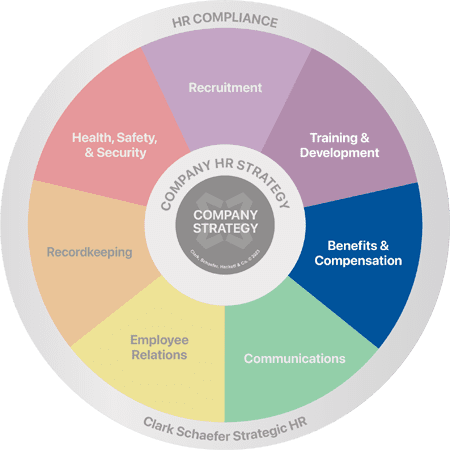Do Our Remote, Out-of-State Employees Qualify for FMLA?
Last Updated on July 13, 2022 / HR Compliance

HR Question:
Our company has employees located in Ohio who all qualify for the protections covered under the Family Medical Leave Act (FMLA), but we also have employees working remotely in other states. Do our remote, out-of-state employees qualify for our FMLA policy?
HR Answer:
Great question. Even if the employees don’t fall within the 75-mile radius that the FMLA takes into account when counting employees towards the requirements, employers are still required to provide FMLA benefits to their employees who work remotely and out-of-state.
Why Does FMLA Compliance Matter?
What happens if those same benefits aren’t extended properly? Well, a lack of FMLA compliance can result in impressive fines. For example, not completing the notice can cost several hundred dollars alone, not to mention the millions in fines that can result from a mishandled claim or wrongful termination, such as the situation this Massachusetts company found itself in.
Even before the COVID-19 pandemic struck, some companies were beginning to branch out of their home states and hire individuals with the necessary talent, but not necessarily the ideal location. Many of these organizations were pioneering the process, working through the requirements and laws as they could. Now that remote work has become such a staple in the business community, it’s easier for any organization to run into this issue, as it’s often the case that many remote employees may be the first or only employee in a particular state.
How to Determine if Remote Employees Qualify for FMLA
There have been no changes to what is defined as “covered employers” as defined by the Department of Labor (DOL), as a “covered employer may be a private-sector employer (with 50+ employees within a 75-mile radius in 20 or more workweeks in the current or previous calendar year), a public agency, or a school.” Employers that fall under this category are required to provide FMLA benefits and protections to eligible employees while also complying with additional responsibilities required under the FMLA.
An eligible employee is one who:
- Works for a covered employer,
- Has worked for the employer for at least 12 months as of the date the FMLA leave is to start,
- Has at least 1,250 hours of service for the employer during the 12-month period immediately before the date the FMLA leave is to start (a different hours of service requirement applies to airline flight crew employees), and
- Works at a location where the employer employs at least 50 employees within 75 miles of that worksite as of the date when the employee gives notice of the need for leave.
So why does this rule extend to those employees who fall outside of the 75-mile radius and the 50+ employee count? It’s because the DOL determines their FMLA status based on the office or location that delivers their assignments or that they report to. The purpose of this is to protect the employees’ jobs should they have the need to focus on their own or their family’s health.
If you assume that you don’t have to meet FMLA guidelines for a remote employee, be sure to double-check the Department of Labor’s regulations, as well as your own internal reporting system, before skipping this important requirement.
Special thanks to Alisa Fedders, MA, SPHR, and Samantha Kelly for contributing to this edition of our HR Question of the Week!
FMLA, ADA, and other labor laws can be difficult to understand – let alone enforce. That’s where Strategic HR has you covered. We bring years of experience and know-how to the table. We can assist you with your tough compliance issues and help you sleep more soundly at night. Visit our HR Compliance & Recordkeeping page to learn more.






